Chinese Stone Trees
Object
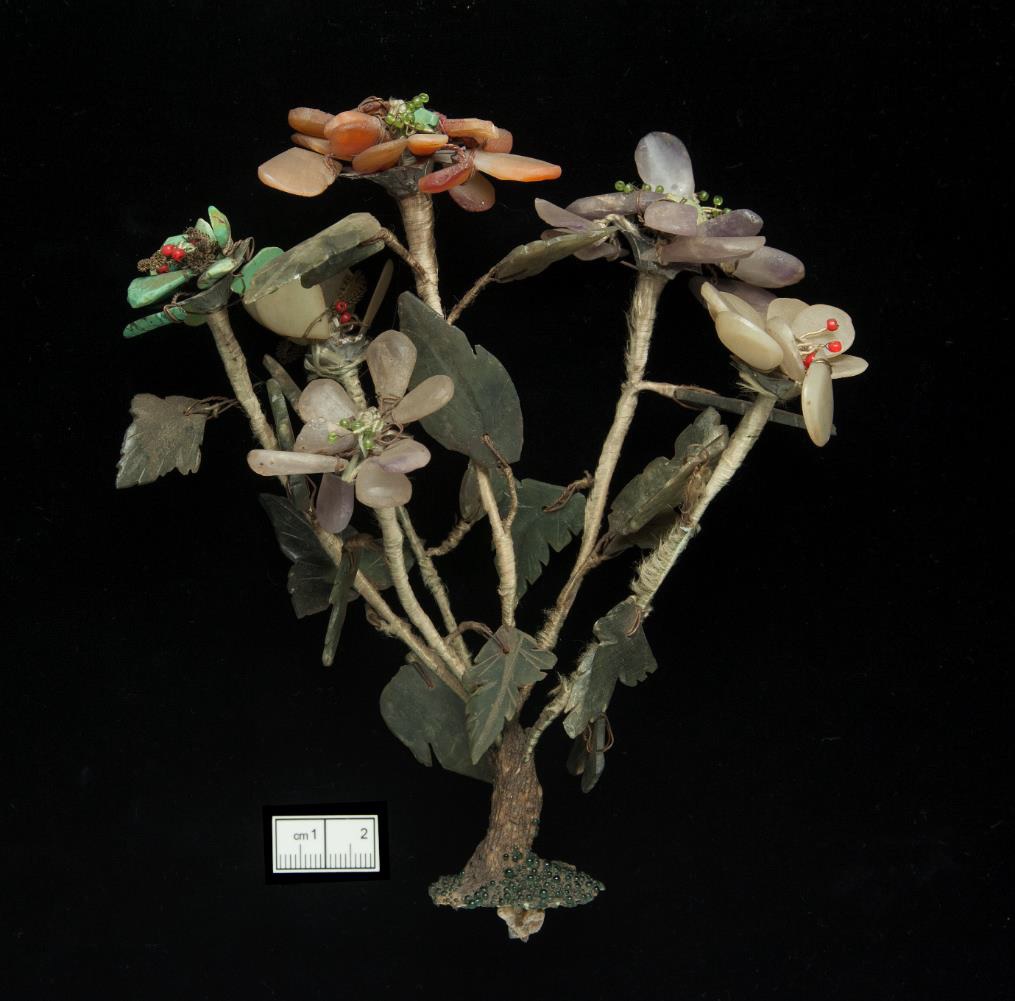
It’s been the easter break so we’ve had a small hiatus from blogging but with the start of the new term we’ve got a new blog post for you. Today is a flashback to a couple of objects that were worked on last summer by one of our students. The objects are two Chinese stone trees that come from the collection at the Oriental Museum in Durham.
These trees were acquired by the Oriental museum in 1961, as part of a large donation made to the museum by Miss Anne Spalding. The trees themselves had originally come from China, and were acquired by Rebecca Hill, Miss Spalding’s aunt, during her visit to the country in 1926.
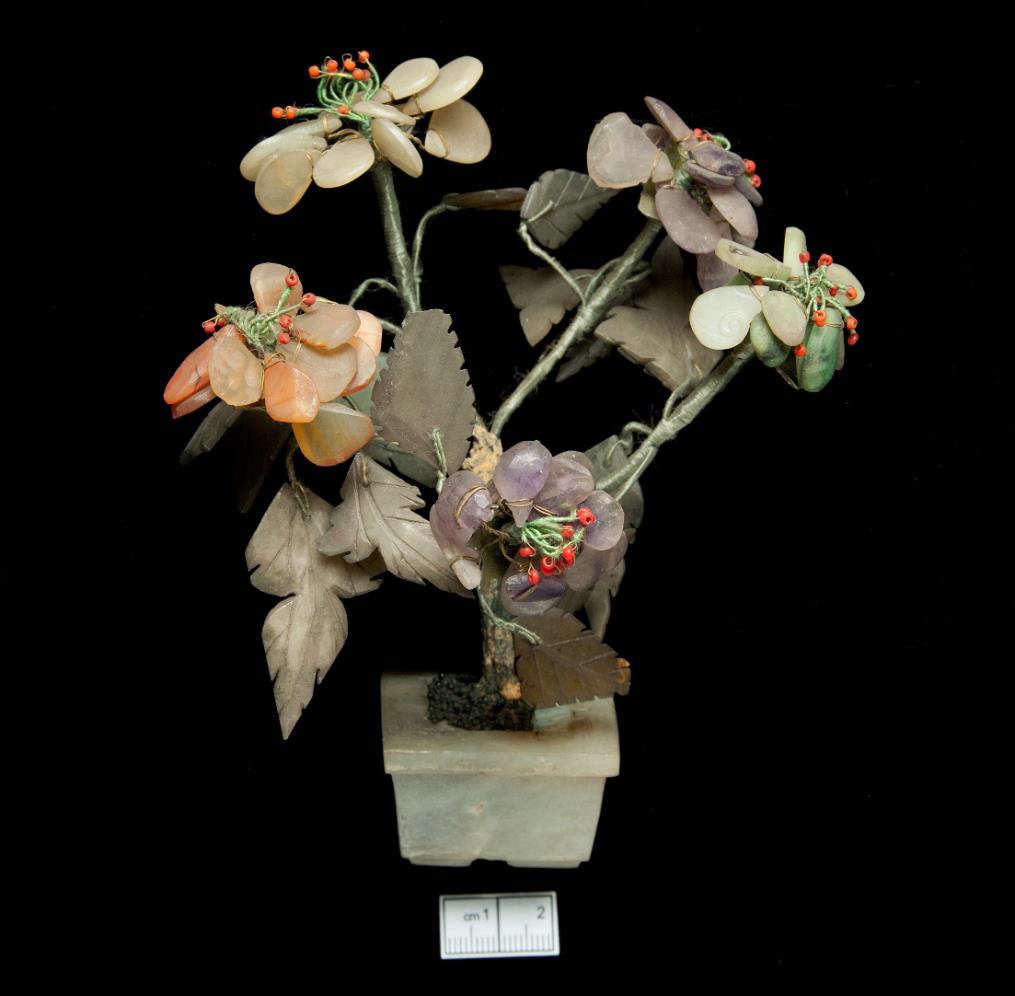
These trees are ornamental in nature. Hardstone artwork, often in the shape of carved animals, plants, and figures were frequently displayed on shelves or desks of royalty, nobility, scholars and the rich to show off wealth and sophistication. Many comparative examples exist from China in this time, many of which can be found on various auction house websites. Given how many of this style are being sold on auction house websites in Europe and the United States, one could argue that they may have been made for the increased number of European and American travellers visiting China in the early 20th century. At a similar time (late 19th/early 20th century) to this trend in China, Fabergé in St Petersburg began making plants in precious and semi-precious stones, which prompted other jewellers, like Cartier, to do the same. This demonstrates that the demand for such objects, at least in Europe and America, existed at that time.
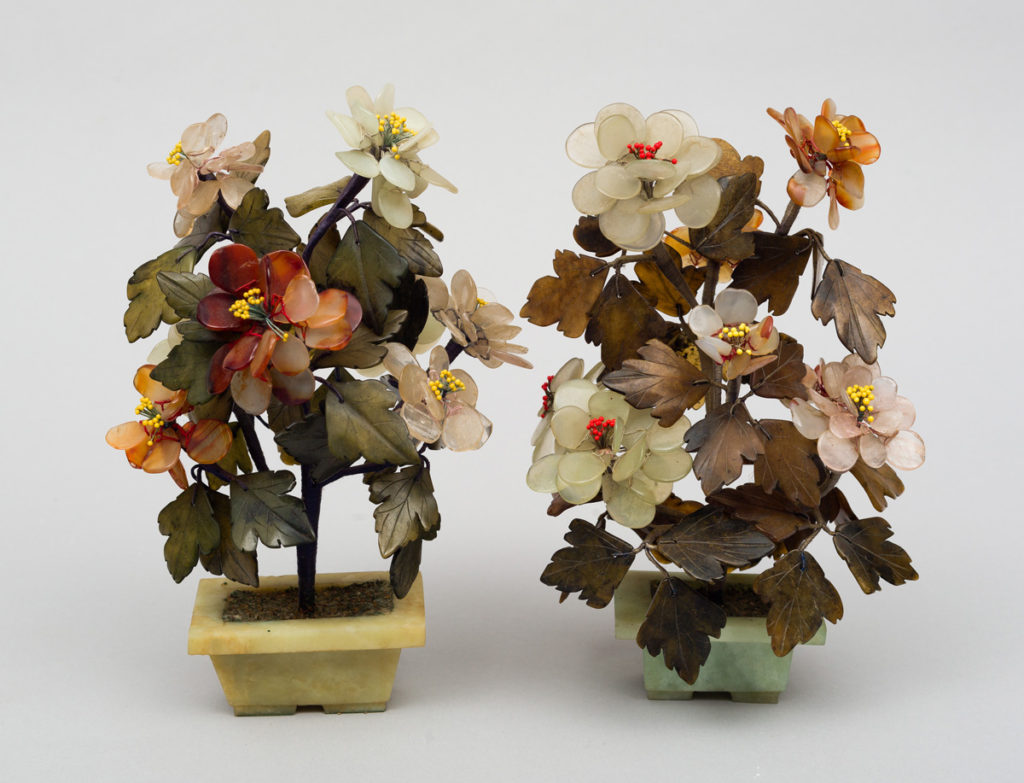
A secondary, more symbolic function may also be fulfilled by these trees. The tree form of the object and the use of specific crystals may have potential ties to the philosophical system of Feng Shui. Feng shui is closely tied to Taoism and is meant to promote harmony with the natural environment by arranging households and buildings in an auspicious manner in accordance with natural features, stars or a compass. By placing certain crystals, often in the form of a gemstone tree at certain points in the house, luck (the type depends on the crystal) should be brought to the homeowner.
These two trees are made of several materials. They both have pots made of nephrite jade, glass micro-bead ‘soil’, papier-mâché ‘bark’, green silk-wrapped wires, nephrite jade leaves, glass seed-beads, nephrite jade petals, amethyst petals and orange agate petals. The large tree has a flower of turquoise petals, and the small tree a flower of a darker green nephrite jade. The majority of these materials were identified using a combinations of visual and comparative analysis, Ramen spectroscopy and EDXRF.
Condition
- The trees are covered in a layer of dirt.
- The large pot has a poor previous repair.
- The large pot had an inadequate ‘sea’ for the tree, which meant it didn’t sit in the base.
- There were a number of missing petals on the trees.
- The petals, leaves and stamens had become disarrayed.
- The silk wrappings were fraying and degrading.
- There were areas of missing ‘soil’.
Conservation

All the stones on the trees were covered with a layer of dirt and dust that was obscuring the transparency and brilliance of the semi-precious stones. Dry cleaning methods were tested first, as solvent cleaning near the silk and papier-mâché was deemed too risky unless dry cleaning proved insufficient. Groomstick was found to be the best at removing the dirt and accommodating the nature of the object.
The base of DUROM.1961.27B was first cleaned with Groomstick (avoiding areas where glass beads remained), before being cleaned with deionised water to get between the grooves. There was some concern about the loss of information regarding the construction of the object, as some of the dirt may have been the remains of the original adhesive. However, the tree had already been damaged and re-adhered at least once previously, so the original adhesive may not remain. As the tree was going to be re-potted, the surface needed to be clean to ensure that the adhesive bonded to the jade, holding the tree in place.
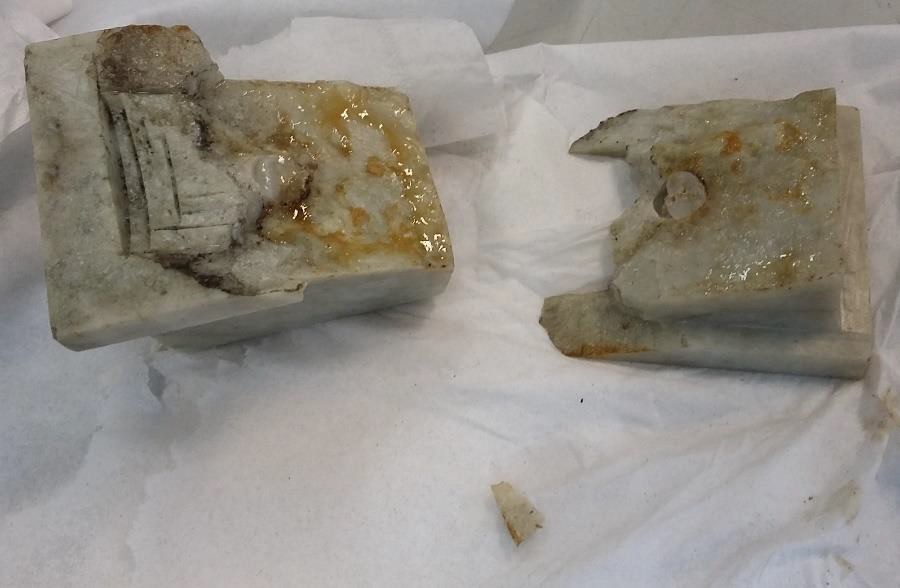
The cleaning of the glass beads of the ‘soil’ was challenging because they were not securely held to the base and they were immediately above the papier-mâché. Dry cleaning would have been best, but nothing tested was able to remove the dirt without removing the beads. Solvent gels were considered, but only magnetic solvent gels were suitable for the object. Unfortunately, magnetic solvent gels are complicated to make due to the chemical binding of the ferromagnetic particles to the polymer, so solvent cleaning with a highly evaporative solvent was tried. A cotton swab slightly dampened with ethanol was very carefully applied to the glass beads, this turned out to be sufficient to clean the glass beads without dislodging them.

It was decided that the old repair on the large pot would be removed, despite it being an important part of the object’s history. The two main fragments were not correctly aligned, potentially impacting the long-term stability of the object, and the old adhesive had yellowed, making the crack far more visible and obvious to the eye, detracting from its aesthetic value. Despite using a variety of solvents to try and take down the old join, nothing appeared to work, suggesting the adhesive was severely degraded. In a final effort, the remaining glass beads were removed (location having been noted), and the pot submerged in deionised water for several days, which was successful. The smell, orange-yellow colour and eventual solubility in water suggest that the adhesive was a highly-degraded animal glue.

The initial plan to replace the five missing petals on the large tree was to use ‘beads’ of the same stones from jewellery supply stores, since many stocked petal-shaped beads. These could be put in place on the tree using the original wires, and have an identifying mark carved into them. It was later revealed that the stones for the beads would have to be ethically sourced in order for the treatment to stay within the bound of the ethics of the Oriental Museum. This presented a challenge, as it is difficult to source ethically mined and carved semi-precious stones (there is no guarantee that every step of the process will have been done on an ethical and moral basis). Fragments of semi-precious stones (uncarved), could be found, but they were much more expensive than the jewellers beads, and added the extra challenge of having to carve out the appropriate petal shapes. It was therefore decided to use moulding and casting materials to make moulds using the petals already in place (using the empty wire brackets to suggest which sized petals would need to be cast), and cast them in the available resins.
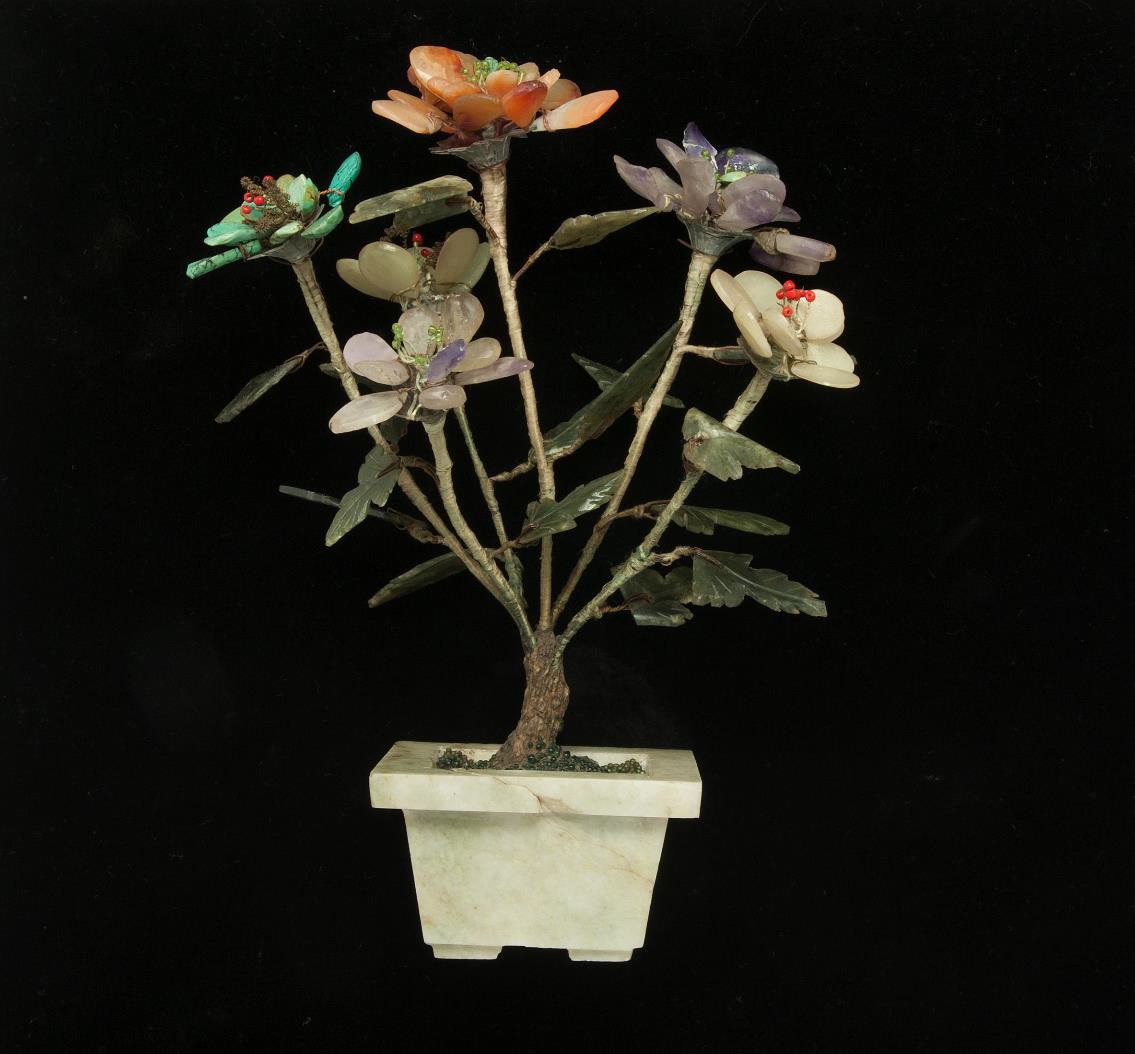
In order to ensure the long-term stability of the large tree, the decision was made to widen the hole in the ‘pot’ in which the base of the tree sat. It was hoped that this change would prevent the tree from becoming detached from the pot should the object tip over. This required the filing down of the jade around the pre-existing hole. Though only a small amount needed removal, it essentially destroys part of the object, which is a serious ethical concern. However, the long-term benefits, in this case, far outweighed the destruction of a few millimetres of jade. The shape was achieved using the coarse metal file attachment on the Dremel drill. The stone was wetted with deionised water to prevent dust, and continually swabbed throughout the process. The filing was done prior to the reassembly of the pot.
The large pot was re-adhered with HMG Paraloid B72, which was chosen as it is water-white, medium strength, long term stable and reversible. A stronger adhesive was not deemed appropriate as the large surface area of the join would provide sufficient contact for the adhesive to bond. To reattach the large tree to the pot, a mixture of Polycell Polyfilla, water and Neutral pH adhesive was used after experimentation determined it to be best. Unfortunately, the mixture shrunk a little upon drying, so did not adhere well to the side of the hole, and meant the tree was wobbling in its base. It did however, perform its function in preventing the tree from becoming detached from the pot. The wobbling was solved using 20% Paraloid B72 in acetone, after testing to ensure that the acetone did not affect the papier-mâché and glass beads.
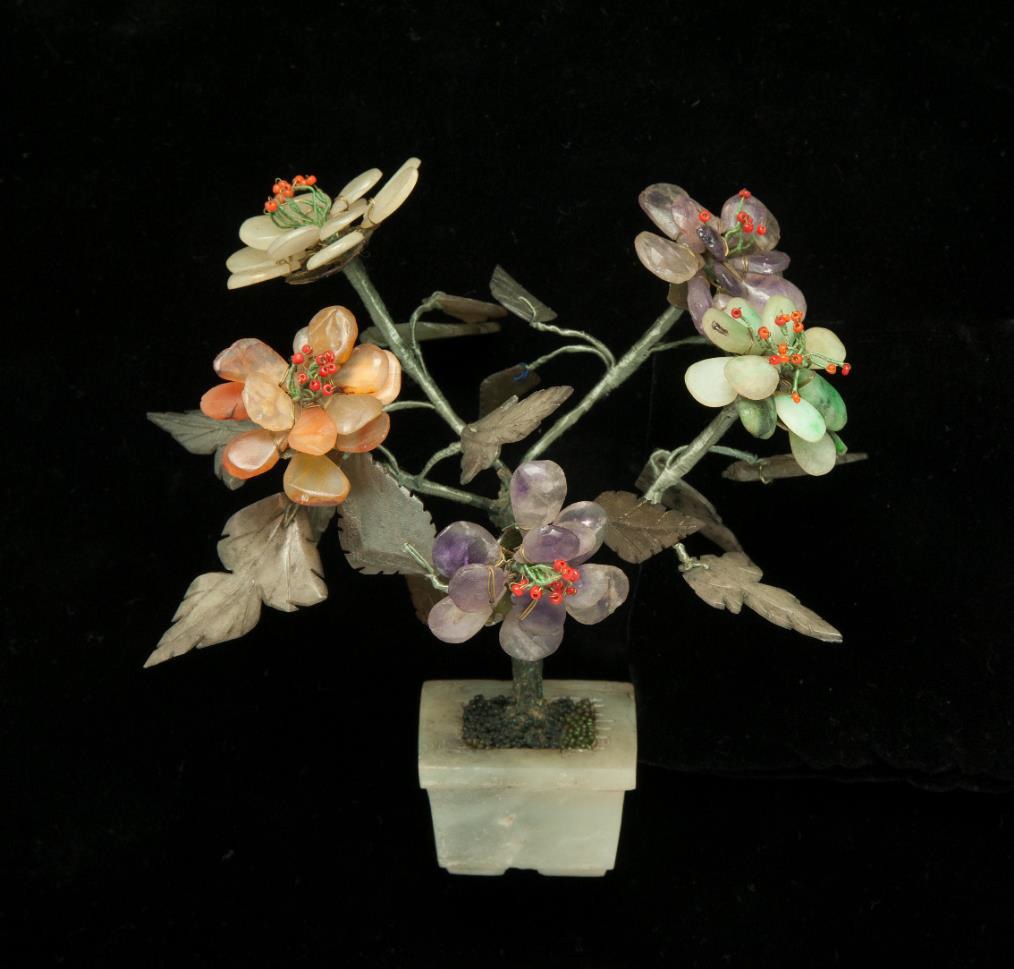
The silk wire wrappings were fraying on both trees, with those on the larger tree being significantly worse. Consolidation was considered necessary to prevent the further loss of loose silk strands, and prevent a larger problem, such as loss of a large portion of the silk, from occurring. After discussion with Dr. Mary Brooks, and further reading, it was decided that a low concentration of a modified cellulose starch should be used for this object.
The original glass beads that had fallen off the trees were reattached using Neutral pH adhesive if they were being attached to the papier-mâché, or 20% Paraloid B72 in acetone if they were being attached to the pot. To attach replacement beads, a layer of 20% Paraloid B72 in acetone was first applied to the base. The replacement beads were then painted with two coats of Raw Umber acrylic paint and attached to the base using neutral pH adhesive; they were attached one at a time using tweezers and dental tools. Another layer of acrylic was painted over the replacement beads to better match the original beads.
